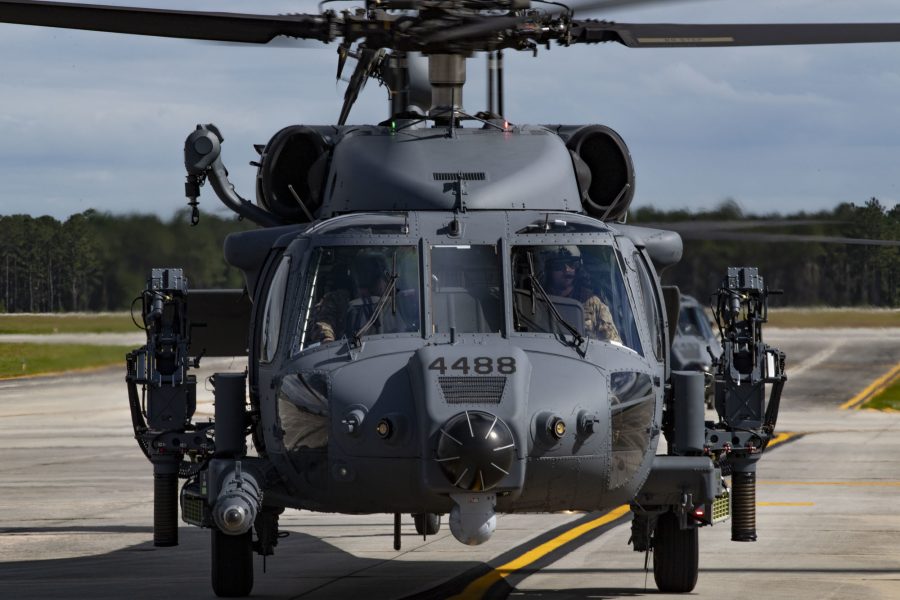Sikorsky will finish its to-do list of developmental flight testing requirements for the Air Force’s new fleet of combat search-and-rescue helicopters in the next month or so, and is gearing up to deliver one chopper per month starting this summer, company officials told reporters Feb. 17.
The Combat Rescue Helicopter program is moving forward as Sikorsky has delivered eight of the nine HH-60W Jolly Green II aircraft built so far. Those eight helos are housed at Kirtland Air Force Base, N.M., and Moody Air Force Base, Ga., while Sikorsky is using the ninth airframe for flight tests, according to Dana Fiatarone, the Lockheed Martin subsidiary’s vice president for Air Force and Army systems.
The HH-60W has proven it can perform in extremely hot, cold, and wet weather, and passed a midair refueling test with a HC-130J last summer. The Jolly Green II is now headed to Naval Air Weapons Station China Lake in California for radar warning receiver testing.
Steven Hill, Sikorsky’s CRH program director, said it’s too early to tell whether the helicopters are performing as expected.
The company now has 22 helicopters on contract, according to Sikorsky. The manufacturer could see an award for another 19 helos in mid-2021. The Air Force plans to buy more than 100 HH-60Ws for $7.5 billion over the course of the program.
Officials on the call referred questions about how CRH will spread across Air Force bases to replace the HH-60G Pave Hawk, which entered service in the early 1980s, to USAF. The new fleet is an updated Black Hawk variant that can fly farther than its predecessor and has more tools to protect against incoming threats, among other improvements.
Sikorsky is already looking at changes to bring its helicopters into the farther future, such as improved survivability, while also ditching earlier requirements that will be outdated once the aircraft is in use.
The Air Force on Feb. 11 published a partially redacted document indicating the service will offer as much as $980.7 million for helicopter upgrades to “combat real-world threats” to search-and-rescue missions. Those modifications will begin this year, USAF said.
“The subsequent delay by not initiating development and fielding for the [capability upgrade] requirements will continue to become more severe as the HH-60G fleet continues to age and until the HH-60W replacement helicopter becomes operationally capable,” the Air Force said.
Failures in older helos led to an undisclosed number of “losses and fatalities during Operation Enduring Freedom and Operation Iraqi Freedom, as one example,” USAF noted.
